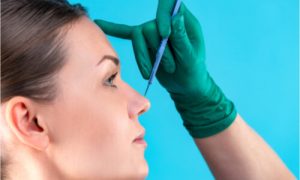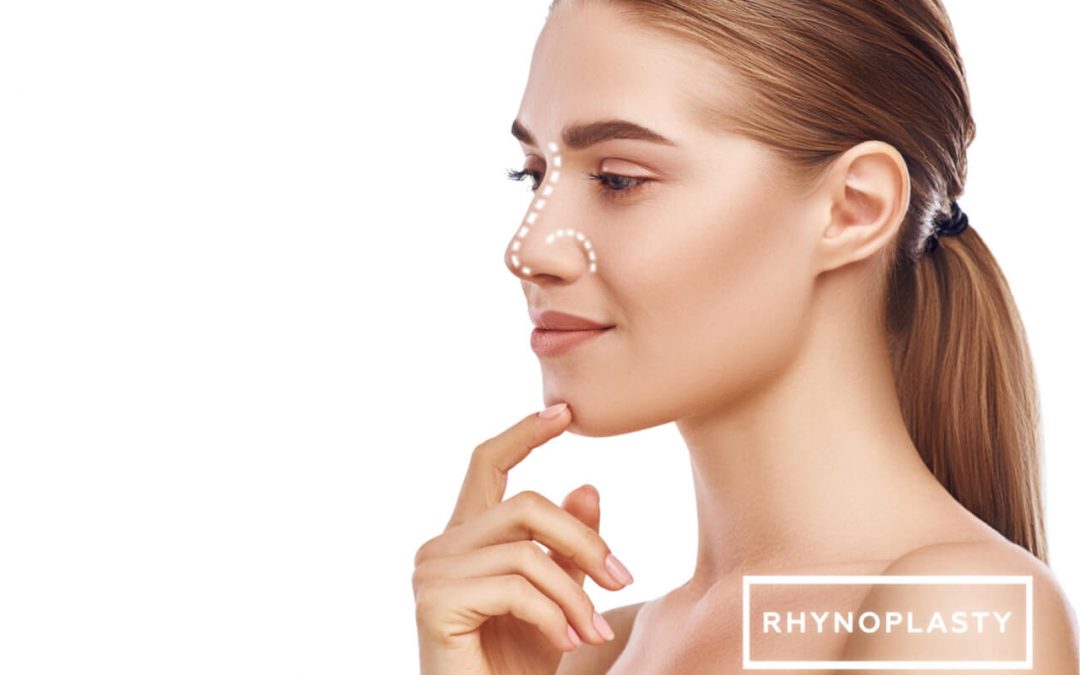How much does a closed rhinoplasty cost? The cost of any surgical procedure for some patients can be so high. Nose reshaping, in particular, is rarely covered by insurance agencies and can be a substantial cash-based expense. Nonetheless, numerous people are more than willing to foot the bill for Nose reshaping to have a more pleasing appearance. If you want to learn more about closed rhinoplasty , find out more in this article.
What is a Closed Rhinoplasty?
People who are not completely happy with their nose may look for different ways to change its appearance without a single visible scar. A closed rhinoplasty is a cosmetic method that utilises incisions inside the nasal skin. So that there is not a ton of noticeable scarring outwardly.
Unlike a more traditional open rhinoplasty, closed rhinoplasty involves reshaping the nasal tip, shortening the nose, or disposing of a dorsal hump. In addition, the perfect candidate’s nose would be well-proportioned, with most of the reshaping happening on the dorsal hump or the nasal tip.
How does a Closed Rhinoplasty work?
This procedure is also called endonasal rhinoplasty. During this, the cosmetic doctor will create all incisions within the nostrils. They will not fully open the nose and not expose the nasal structure.
Basically, cosmetic doctors in a closed rhinoplasty will complete everything through narrow openings in every nostril with limited visibility. Thus, it is fundamental to select a skilled doctor and see theirs before and after photos.
Moreover, closed rhinoplasty is pretty fast. It does not cause a great deal of swelling or a long recovery. In fact, most cosmetic doctors can complete rhinoplasty procedures using general anesthesia.
Preparation for the Nose Surgery
Before an open or closed rhinoplasty, you will talk with your doctor to discuss your particular situation and desired result. You should ensure the specialist comprehends your vision and will share before and after pictures and that you have sensible assumptions for what to expect.
During a consultation, make sure to inform your doctor about any medications or supplements you are taking. Your doctor or nurse will likewise take a photo of your nose from different angles. Then, they will help you decide if you are a good candidate for nonsurgical rhinoplasty. This technique involves fillers to reform the nose.
As your procedure comes, avoid thinning blood prescriptions, such as aspirin or ibuprofen and alcohol. Smoking can delay the healing process, so it is wise to stop smoking before the . Lastly, arrange to have somebody drive you home. If you live alone, then ask a friend to stay with you for a little while.
Closed Rhinoplasty Procedure
On the day of the procedure, your doctor will give you anesthesia. A few specialists go for general anesthesia during cosmetic rhinoplasty. This can cause blood in the throat, which could be conceivably risky if a patient is unconscious.
When you are numb, your cosmetic doctor will cut the inside of your nostrils. They will disconnect your skin from your cartilage, then start the procedures of reshaping by shaving or adding bone. Know that adding bone needs a bone graft procedure.
Once your doctor completes the reshaping, they will stitch any cuts to close it and place a cast or a nose splint. In any case, closed rhinoplasty procedures will usually complete in 1 to 2 hours.
Pros and Cons of a Closed Rhinoplasty
Advantages
Though most cosmetic doctors prefer an open rhinoplasty in many cases, a closed approach can be entirely practical as well. In fact, a closed rhinoplasty might be a better decision in several rhinoplasties, where just a modest amount of work is necessary.
Though the scar with an open rhinoplasty turns out to be almost invisible in most patients, the closed approach does have the benefit of having no scars at all. In addition, a closed rhinoplasty has the momentary benefit of having to some degree more minor swelling during the healing process.
Suppose your doctor can do your nose job with a closed method. In that case, it is worthwhile to discuss whether this choice is good for you or not.
Disadvantages
A closed rhinoplasty might be an appropriate decision for certain patients who need the littlest amount of work done. However, many doctors find that patients frequently need more work done on their noses than they think. Often, a patient will request seemingly a little superficial change, yet learns their request may include a more critical measure of thorough work.
During a consultation visit, numerous patients understand that even the little cosmetic change they ask for has more significant implications on the nose’s construction. These changes are necessary to offer them the results they look for. In many cases, closed rhinoplasty does not give enough access to permit a doctor to do the most accurate and detailed bone and cartilage improvements.
Factors that can Affect the Cost of Rhinoplasty
The cost of open and closed rhinoplasties can vary. Here are some of the factors that can affect the total cost.
Complexity of the Procedure
The value of rhinoplasty can vary and is contingent upon various factors. The degree of the system and the form of rhinoplasty being performed, for instance, will incredibly affect the entire cost of your operation.
The most common reasons for going through a rhinoplasty might incorporate one or more of the following issues:
- Large or drooping nasal tip

- Crooked or asymmetrical nose
- Disproportion of the nose size to other facial characteristics
- Bump present on the bridge of the nose
- Very narrow or broad nostrils
Suppose you are getting a rhinoplasty mainly for aesthetic reasons. In that case, it is rare that your medical insurance will take care of the expense of the procedure.
In addition, rhinoplasty may likewise be chosen to reestablish your nose function, otherwise called functional rhinoplasty. Hence, if nasal obstructions are meddling with your breathing or personal satisfaction. Then, in that condition, your health insurance can cover a portion of the expense or the total cost of your bill.
Common functional reasons for rhinoplasty might incorporate at least one of the following concerns:
- Chronic stuffiness, post-nasal drip, and snoring
- Obstructive issues such as a deviated septum
- Reconstructive purposes
- Misshapen nose from an injury or congenital disability
Surgeon’s Skill Level
The cost of a rhinoplasty procedure will also shift fundamentally, relying upon your doctor’s skill level, certifications and even the geographic area of their training. Note that when you start your quest for the right doctor for your rhinoplasty, their surgical charges should not be the main factor in your choice. Looking for a board-certified doctor is essential. Hence, your doctor should be a person you are comfortable with, who knows your aesthetic objectives and has the skill to do this specific procedure.
A significant qualification while choosing a doctor guarantees that they have the proper certifications and experience to ensure your rhinoplasty procedure’s safety and success. Selecting a cosmetic doctor you can trust to help you accomplish your target securely and effectively is priceless.
Pre- and Post-Operative Care
Rhinoplasty costs frequently omit the care required for the and the expenses related to this care. Pre-operative visits such as consultation or post-operative follow-ups are both essential components to successful treatment. Hence, you should discuss this with your doctor.
You may likewise wish to plan for the chance of the extra expenses of medications required post-. For instance, this may include pain medications which are not generally covered for the all-out estimate. In addition, other indirect costs of rhinoplasty might consist of loss of earnings from the time taken off work for the operation. This may also include the recovery period and travel expenses, relying upon the location of your doctor.
What to Expect after a Rhinoplasty
After the , you will have a splint or cast for around 5 to 7 days. This will assist with supporting your nose as it recovers. Prepare ahead of time for a person to drive you home, as you cannot go under anesthesia. You will also need to take a couple of days off from work and sleep with your head raised, which can help lessen the swelling.
Additionally, your doctor might advise you to keep away from the following:
- excessive chewing
- blowing your nose
- strenuous activity or exercise
- swimming
- sleeping on your face
- drinking alcohol
- pulling clothes over your head
Following a week or so, your doctor will remove your nose splint or cast, uncovering your new nose. You might still have some injury and swelling around the nose and eyes. Yet, you should start to get back to ordinary activities. Keep in mind that the results are permanent except if you break or harm your nose.
How to Find a Provider
Whether you plan to get rhinoplasty treatment to enhance your complete appearance or improve functionality to your nose. Let the highly skilled doctors and staff at Refine Cosmetic Clinic help you achieve results you will love. Rhinoplasty is a long-lasting and life-changing investment where the expense can shift incredibly. Call (02) 8880 5116 today to book your consultation and let us help you determine the cost and inclusion of your future rhinoplasty!
References:
What are the steps of a rhinoplasty procedure?
https://www.cosmetic.org/cosmetic-procedures/rhinoplasty/procedure
Nose Reshaping.
https://www..org/consumers/ask-a-doctor/difference-open-closed-rhinoplasty
General anesthesia.
https://www.mayoclinic.org/tests-procedures/anesthesia/about/pac-20384568
Tips for Choosing a Great Surgeon.
https://www.verywellhealth.com/how-to-find-a-great-doctor-3156937
Thinking about rhinoplasty?
https://www.health.harvard.edu/blog/thinking-about-rhinoplasty-2019030616112


